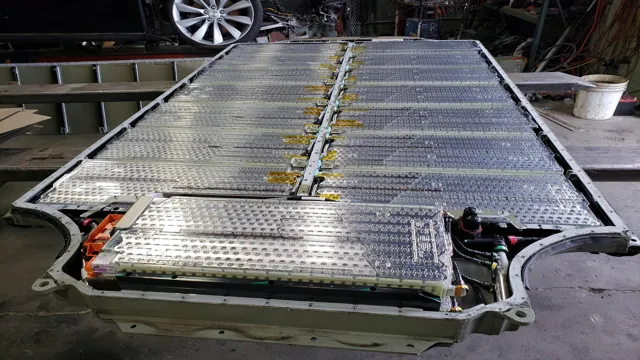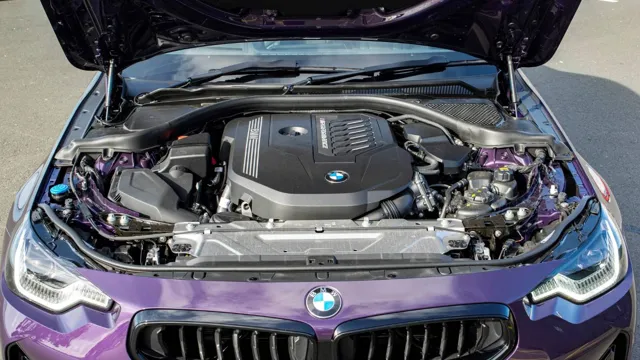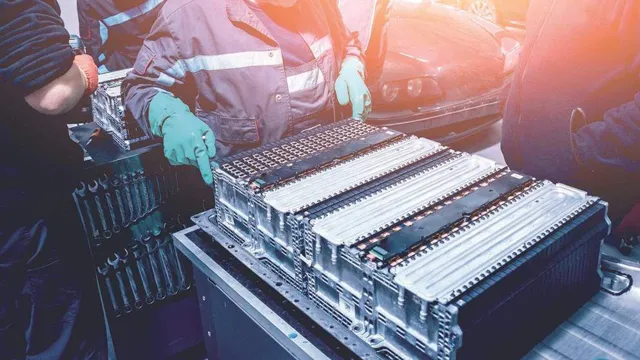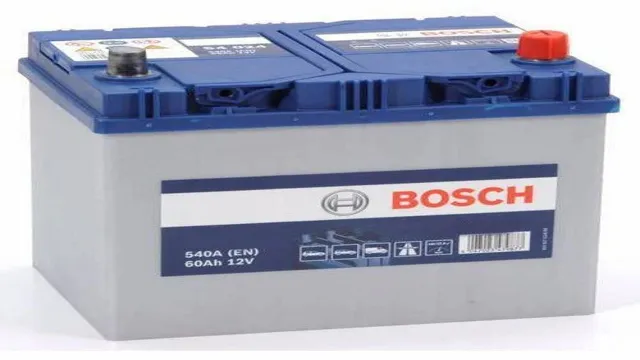The Inside Scoop: A Comprehensive Guide to the Anatomy of Electric Car Batteries
Electric vehicles are all the rage, and the main reason behind their popularity is their environmentally friendly nature. The ability to reduce carbon footprints is one of the top reasons why many people are opting for electric cars. However, one part that remains a mystery to most is the car’s battery.
An electric car battery is the heart of the car, and it’s essential to understand the anatomy and how it works. In this blog post, we’ll dive into the electric car battery anatomy that will help you understand how these powerhouses work. So grab a cup of coffee, sit back, and let’s dive into the world of electric car batteries!
Parts of an Electric Car Battery
When it comes to electric car batteries, it’s important to understand their anatomy. The battery pack is usually the largest component of an electric car and is made up of several smaller battery modules. These modules are made up of individual battery cells which can either be cylindrical, prismatic, or pouch-shaped.
Inside each cell, there are two electrodes – an anode and a cathode – which are separated by a separator. The separator prevents the electrodes from touching and causing a short circuit, while still allowing ions to flow between them during charging and discharging. The electrolyte inside the cell allows ions to move between the electrodes, which is what creates the flow of electricity.
The battery management system (BMS) also plays a crucial role in the battery’s anatomy, monitoring the health and temperature of the battery and ensuring it operates within safe limits. With all its intricate parts and components, the electric car battery is truly a marvel of modern engineering.
Cells
When it comes to electric cars, the battery is truly the heart of the vehicle. And just like the human heart, it’s made up of many different parts, each with a specific function. One of the most crucial parts of an electric car battery is the cell.
Cells are the basic building blocks of all batteries, and in an electric car battery, thousands of cells are stacked together to create a power source capable of propelling a vehicle down the road. Each cell is made up of several components, including a cathode, an anode, a separator, and an electrolyte. The cathode and anode are the positive and negative electrodes of the cell, while the separator acts as a barrier between them.
The electrolyte, a solution of lithium salts in a solvent, facilitates the flow of ions between the two electrodes, creating a charge that can be used to power the car’s electric motor. So while cells may seem like a small part of an electric car battery, they play a critical role in making sure the vehicle runs smoothly and efficiently.
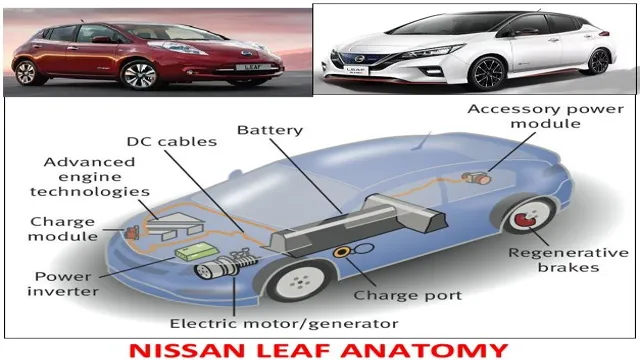
Modules
Modules Electric car batteries may appear to be simple power sources, but they are incredibly complex systems made up of various parts and modules. One essential component is the battery module, which consists of multiple battery cells. These battery cells work together in a coordinated effort to produce the necessary electrical current to power the electric car’s motor.
A single module contains anywhere between 12 to 24 battery cells, and each cell generates around 6 volts. The number of modules an electric car has depends on the car’s size, the intended range, and the desired power output.
For example, luxury electric cars may have as many as 16 battery modules, while smaller electric cars may only have six or eight. The battery management system (BMS) controls the behavior of each module, ensuring that they are operating optimally and maintaining a consistent charge. It also monitors the temperature of each battery cell to prevent overheating and potential damage to the battery.
The battery module is just one part of the overall electric car battery system, and it’s an essential component that must be working correctly to provide the necessary power for the vehicle.
Pack
When people talk about electric cars, the most important component that comes to mind is the battery pack. The battery pack is made up of several different parts that work together to power the vehicle. The first part of the battery pack is the battery cells which are responsible for storing the energy.
The cells are then grouped together into modules to make up the overall battery pack. Each module comes with its own management system which monitors the cells and ensures they are working properly. The battery pack also features a cooling system that helps regulate the temperature.
This is important as batteries can overheat if they get too hot. Finally, the battery pack is connected to the vehicle’s motor and other electronics through the power electronics module. This module converts the DC power from the battery pack into AC power that the motor and other electronics can use.
All of these parts work together to provide the power needed to drive an electric car.
Types of Electric Car Batteries
Electric car battery anatomy refers to the different types of batteries used in an electric car. The most common types of batteries used in electric cars are lithium-ion and nickel-metal hydride. Lithium-ion batteries are preferred over other types of batteries because they store more energy and have a longer lifespan.
They also have a higher energy density, which means they can store more energy in a smaller space. Nickel-metal hydride batteries, on the other hand, are heavier and less energy-dense. They are also less expensive than lithium-ion batteries.
Other types of batteries that can be used in electric cars include zinc-air, solid-state, and hydrogen fuel cells. Zinc-air batteries are lightweight and have a high energy density, but they are still in the developmental stage. Solid-state batteries are also currently being developed because they have a higher energy density and longer lifespan compared to lithium-ion batteries.
Hydrogen fuel cells are another option that produces electricity by combining hydrogen and oxygen, which produces clean water as a byproduct. Overall, the type of battery used in an electric car depends on factors such as energy density, cost, and lifespan.
Lithium-ion
Lithium-ion Lithium-ion batteries are one of the most common types of electric car batteries on the market. They are known for their high energy density, long lifespan, and quick charging capabilities. Lithium-ion batteries use lithium cobalt oxide as their cathode material, which allows them to store more energy in a smaller space.
They also have a high level of safety, as they have built-in protection circuits that prevent overcharging and overheating. Additionally, because they are rechargeable, lithium-ion batteries are more environmentally friendly than traditional combustion engine vehicles. While they may be more expensive upfront, they offer lower maintenance costs in the long run.
Overall, lithium-ion batteries are an excellent choice for electric car owners who prioritize efficiency, reliability, and sustainability.
Nickel-metal hydride
Nickel-metal hydride (NiMH) batteries are another type of electric car battery. They are rechargeable and have a high energy density, making them more efficient than lead-acid batteries. NiMH batteries also have a longer lifespan than lead-acid batteries, lasting up to 10 years under normal use.
They are also more environmentally friendly than lead-acid batteries, as they do not contain toxic lead and are easier to recycle. However, NiMH batteries have a lower power density than lithium-ion batteries, which means they may not be able to provide as much power for acceleration or long-distance driving. Despite this, NiMH batteries are still used in many hybrid and electric cars due to their reliability and efficiency.
Lead-acid
Lead-acid batteries have been around for over 150 years and are commonly used in many conventional cars. They are also a popular choice for electric cars due to their affordability and reliability. However, they are not the most efficient type of battery and have a lower energy density compared to other alternatives.
The lead-acid battery is composed of lead plates and lead oxide with a sulfuric acid electrolyte. They require regular maintenance, such as topping up the electrolyte fluid and ensuring the terminals are clean and free of corrosion. Despite their limitations, some manufacturers have improved the design and performance of lead-acid batteries with the development of Absorbent Glass Mat (AGM) and Valve Regulated Lead Acid (VRLA) technologies.
Overall, lead-acid batteries remain a viable option for electric car owners on a budget who don’t require high performance or long-range travel.
How Electric Car Batteries Work
When it comes to the anatomy of an electric car battery, there are a few key components to understand. Firstly, there are the cells themselves, which are where the energy storage happens. These cells are arranged into modules, which can be further combined to create a battery pack suitable for powering a car.
In addition to the cells and modules, there are also cooling channels and a battery management system that work together to regulate the temperature and ensure the longevity of the battery. The battery management system is especially important, as it monitors the charge and discharge of the battery to prevent overloading or underloading, which can cause damage. All of these components work together to create the powerful and efficient energy storage system that has made electric cars a viable option for drivers today.
Charging and discharging
Electric car batteries work by charging and discharging. When you plug your electric car into an electric source, the battery starts to charge. As the battery charges, the electrical energy is stored in the battery cells, which are made up of lithium-ion or nickel-cadmium.
The lithium-ion batteries are more common because they are lighter and more efficient. When you use your electric car, the battery discharges, delivering electrical energy to the motor, which drives the car. The amount of energy available in the battery determines how far the car can go before you need to recharge it.
It’s just like filling up the tank in a gasoline car, except with electricity. Understanding how your battery works can help you make the most of your electric car and take advantage of its many benefits. So, the keyword “charging and discharging” is an important aspect to consider when it comes to electric car batteries.
Regenerative braking
Regenerative braking is one of the most important features in electric cars. While conventional cars use friction brakes to slow down, electric cars use a clever technology to recover braking energy. Essentially, when you hit the brakes in an electric car, the kinetic energy is converted into electrical energy, which is then stored in the battery for later use.
This not only saves energy but also extends the battery life. It works by utilizing an electric motor as a generator, converting the car’s forward momentum into electrical current that can recharge the battery. The process is akin to using the engine in reverse to provide resistance, slowing down the car and transferring that energy back into the battery.
Overall, regenerative braking is a critical part of how electric car batteries work, allowing for more efficient and sustainable operation.
Maintaining Your Electric Car Battery
To effectively maintain your electric car battery, it’s essential to understand its anatomy. Electric car batteries consist of several individual cells, usually connected in series. These cells contain a positive electrode, negative electrode, and an electrolyte that allows for a chemical reaction to take place, producing electricity.
Ensuring that each cell is working correctly is critical, as a faulty cell can affect the performance and lifespan of the entire battery. Regularly monitoring the battery’s state of charge and taking steps to avoid extreme temperatures can also help prolong its life. Like any other vehicle component, proper maintenance is key to keeping your electric car battery in top shape, ensuring optimal driving range and performance.
By understanding the anatomy and needs of your electric car battery, you can take the necessary steps to maintain its health and longevity, ultimately prolonging its service life and saving you money in the long run.
Conclusion
In conclusion, the anatomy of an electric car battery is a marvel of modern technology, composed of intricate layers and housing hundreds of individual cells, all working together to power our environmentally-friendly vehicles. It’s like a tiny army of well-trained soldiers, marching in perfect formation to power us toward a cleaner, more sustainable future. So the next time you see an electric car on the road, take a moment to appreciate all the hard work that goes on behind the scenes to make it possible.
“
FAQs
What are the components of an electric car battery?
An electric car battery consists of three main components: the cathode, the anode, and the electrolyte.
How do electric car batteries compare to traditional gasoline-powered car batteries?
Electric car batteries are typically larger and heavier than gasoline-powered car batteries, and they use different materials and technology to store and convert energy.
What is the lifespan of an electric car battery?
The lifespan of an electric car battery can vary depending on factors such as usage, storage conditions, and maintenance, but most have a lifespan of around 8-10 years.
How does the anatomy of an electric car battery impact its performance?
The anatomy of an electric car battery can impact its performance in terms of factors such as energy density, charging rate, and temperature management. Optimizing these factors can improve the performance and overall lifespan of the battery.


